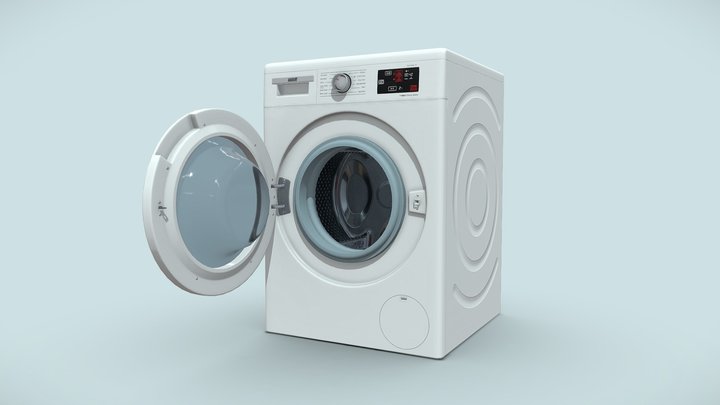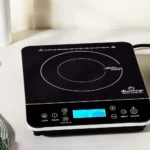
One of the most crucial items in modern households is the washing machine. They simplify and expedite laundry day, letting us to clean our garments with minimum effort. Washing machines, on the other hand, have not always been as handy and efficient as they are now. Since its creation, they have undergone several adjustments and developments. The evolution of washing machines is a fascinating story of innovation and progress, from hand-cranked washers to modern machines with customizable settings. In this article, we will look somes of the most fascinating facts about washing machines, focusing on their history, development, and impact on modern society.
The first washing machine was invented in 1851 by American James King, who designed a wooden “drum” with hand-powered rotation for washing clothes. It was capable of washing only a few garments at a time and was mainly used for delicate fabrics.
The drum, which was the first washing machine, was manually operated and required physical effort to rotate the drum. It was often used in commercial laundries and required several operators to keep it working.
The first electric washing machine was invented in 1908 by Alva J. Fisher, which eliminated the need for hand-cranking and made washing clothes more efficient. The electric motor was used to turn the drum, which made it easier to wash larger loads.
The first automatic washing machine was invented in 1937 by John W. Chamberlain, which introduced a self-regulated washing cycle, removing the need for manual intervention. It was equipped with an automatic timer, temperature control, and an agitator to clean clothes.
The first washing machines were made of wood and had a crank to turn the drum. They were very heavy and difficult to move, which made it challenging to clean clothes in different areas of the house.
The first front-loading washing machine was invented in 1950. It used a horizontal drum design that allowed for greater capacity and reduced the amount of water required for washing.
The first washing machines were only used in commercial laundries. It wasn’t until the early 1900s that they became more common in households, with electric models appearing in the 1920s.
In the 1950s, the first coin-operated washing machines were introduced. This allowed for self-service laundromats to become popular and made washing clothes more accessible for people without their own machines.
The first washing machines used gasoline engines to power the wash cycle. These machines were expensive to operate and required a well-ventilated area to prevent carbon monoxide poisoning.
The first washing machines were only able to wash clothes, not dry them. It wasn’t until the mid-20th century that dryers became more common in households.
The first washing machines had wringers to squeeze out the water from the clothes. These wringers were often hand-cranked and were considered dangerous due to the risk of injury.
The first washing machines were not fully automatic, and required manual intervention. For example, clothes needed to be moved from the washer to the wringer and then to the clothesline for drying.
The first washing machines were very expensive and only the wealthy could afford them. It wasn’t until the mid-20th century that washing machines became more affordable for the average household.
The first washing machines were heavy and difficult to move. They were often placed in a designated laundry room or basement due to their weight and size.
The first portable washing machines were introduced in the 1960s. These machines were smaller and designed to be more lightweight, making them easier to move and store in smaller homes or apartments.
The first washing machines were top-loading, until front-loading machines were introduced in the 1950s. Front-loading machines are now the most common type of washing machine due to their energy efficiency and larger capacity.
The first washing machines used wooden tubs, which were later replaced with metal tubs. Metal tubs were more durable and easier to clean than wooden tubs.
The first washing machines had no agitators, and relied on the clothes rubbing against each other to clean. Agitators were later added to machines to help clean clothes more thoroughly.
The first washing machines were not very efficient and used a lot of water and electricity, making them expensive to operate and not environmentally friendly.
The first washing machines did not have a spin cycle, and clothes had to be wrung out by hand or with a wringer. This made the washing process longer and more labor-intensive.
The first washing machines had simple controls, such as a dial for setting the wash cycle and a switch for turning the machine on and off. Modern machines have digital displays and a range of customizable settings.
The first washing machines were loud and produced a lot of vibration. Advances in technology have led to quieter machines with less vibration.
The first washing machines used a lot of electricity and were not energy-efficient. Modern machines are designed to use less energy and water, making them more environmentally friendly.
The first washing machines did not have a detergent dispenser. Instead, users had to add detergent directly to the water. Modern machines have built-in dispensers for detergent, fabric softener, and bleach.
The first washing machines were not very gentle on clothes and could cause damage or shrinkage. Advances in technology have led to gentler machines that are better for delicate fabrics.
The first washing machines were not designed to handle large items, such as blankets or comforters. Modern machines have larger drums that can accommodate larger loads.
The first washing machines did not have a dryer built in. Users had to hang clothes outside or indoors to dry. Modern machines often have a built-in dryer or are sold as a washer-dryer combo.
The first washing machines required a lot of maintenance and upkeep, such as cleaning the tub and changing the belts. Modern machines are designed to require less maintenance and are easier to clean.
The first washing machines were not very stylish and often had a utilitarian appearance. Modern machines come in a range of styles and colors to fit different home decor.
The first washing machines did not have a child-lock feature. Modern machines often have safety features to prevent children from accidentally starting the machine or accessing the controls.
The first washing machines did not have a delay-start feature. Modern machines often have a delay-start feature, allowing users to set the machine to start at a later time.
The first washing machines did not have a self-cleaning cycle. Modern machines often have a self-cleaning cycle that helps to remove build-up and keep the machine running smoothly.
Washing Machine FAQs
1. Choosing a Washing Machine:
- What size washing machine do I need? Washing machine capacity is measured in kilograms (kg) or cubic feet (cu. ft.) and should be chosen based on your household size and laundry habits. A general guideline is:
- Small households (1-2 people): 6-7 kg (3.5-4 cu. ft.)
- Medium households (3-4 people): 7-8 kg (4-4.5 cu. ft.)
- Large households (5+ people): 8 kg or more (4.5 cu. ft. or more)
- Top load vs. Front load washer?
- Top load: Easier to load and unload, often agitator-based cleaning, may not be as water-efficient.
- Front load: More water-efficient, gentler on clothes, may require more maintenance to prevent mold growth.
- What features are important? Consider features like cycle options (delicate, heavy duty, steam cleaning), spin speed (affects drying time), noise level, and smart features (remote control, cycle monitoring).
2. Using Your Washing Machine:
- How do I sort my laundry? Separate clothes by color (darks, lights, whites), fabric type (delicates, towels), and care instructions (wash temperature, drying method).
- How much detergent should I use? Follow the instructions on the detergent packaging and adjust based on your water hardness and load size. Using too much detergent can leave residue on clothes.
- What cycle should I use? Choose a cycle appropriate for the fabric type and soil level. Consult your washing machine manual or the laundry care symbols on your clothes.
- Can I add clothes after I start the cycle? Some washing machines have a “pause and add” feature that allows adding clothes mid-cycle. Check your machine’s manual for details.
3. Washing Machine Maintenance:
- How do I clean my washing machine? Run a hot water cleaning cycle with vinegar or a washing machine cleaner periodically to remove detergent buildup and prevent mold growth.
- How do I prevent mold and mildew? Leave the washing machine door open after a cycle to allow moisture to evaporate. Wipe down the door gasket regularly to remove any moisture or debris.
- What should I do if my washing machine isn’t working properly? Consult your washing machine manual for troubleshooting tips. If the problem persists, contact a qualified appliance repair technician.
4. Additional Tips:
- Pre-treat stains for better cleaning results.
- Turn clothes inside out to protect them from wear and tear.
- Don’t overload the washing machine. This can lead to uneven cleaning and damage the machine.
- Clean the lint trap regularly to prevent clogs and improve drying efficiency.
- Air dry clothes whenever possible to save energy and reduce wear and tear.
By following these FAQs and your washing machine’s manual, you can ensure your clothes are cleaned efficiently and your machine lasts for years to come.









